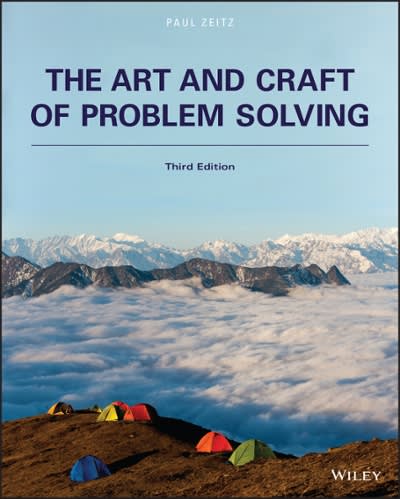Question
Problem 3 [15 marks] An investor in the stock market purchased a single share of stock for each of 50 different companies. Suppose each stock
Problem 3 [15 marks]
An investor in the stock market purchased a single share of stock for each of 50 different companies. Suppose each stock is worth $20. Every day, each stock goes up by $1 with probability p or down by $1 with probability (1 ? p). Note that the stocks are independent of each other, and each day is independent of the others as well. Denote the value of the k-th stock after T days (where T is a constant) by STk (for k = 1, . . . , 50). The initial value of the portfolio of the investor is
K 50 ?S0k =?20=2050=1,000. k=1 k=1
(a) What is the probability that a share of stock (of any company) was worth $23 after 5 days if it was worth $26 after 10 days? [5 marks]
(b) What is the expected value and the standard deviation of the value of the investor's portfolio after T days? Your answer should be in terms of T and p. Assume that T ? 20 days. [5 marks]
(c) Is it more advantageous for the investor to invest in 50 shares of the same company, or keep his current strategy of buying a single share of stock for 50 different companies? Explain your answer by comparing the expected value and variance of the portfolio values after T days. Again, you can assume that T ? 20 days. [5 marks]

Step by Step Solution
There are 3 Steps involved in it
Step: 1

Get Instant Access to Expert-Tailored Solutions
See step-by-step solutions with expert insights and AI powered tools for academic success
Step: 2

Step: 3

Ace Your Homework with AI
Get the answers you need in no time with our AI-driven, step-by-step assistance
Get Started



